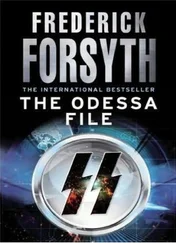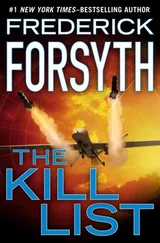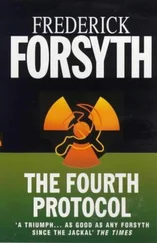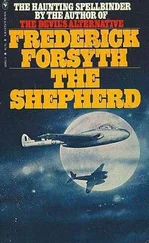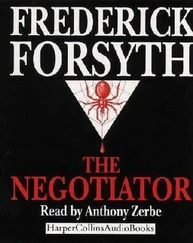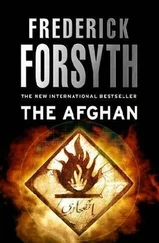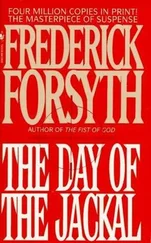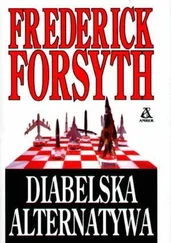Frederick Forsyth - The Devil's Alternative
Здесь есть возможность читать онлайн «Frederick Forsyth - The Devil's Alternative» весь текст электронной книги совершенно бесплатно (целиком полную версию без сокращений). В некоторых случаях можно слушать аудио, скачать через торрент в формате fb2 и присутствует краткое содержание. Жанр: Шпионский детектив, на английском языке. Описание произведения, (предисловие) а так же отзывы посетителей доступны на портале библиотеки ЛибКат.
- Название:The Devil's Alternative
- Автор:
- Жанр:
- Год:неизвестен
- ISBN:нет данных
- Рейтинг книги:5 / 5. Голосов: 1
-
Избранное:Добавить в избранное
- Отзывы:
-
Ваша оценка:
- 100
- 1
- 2
- 3
- 4
- 5
The Devil's Alternative: краткое содержание, описание и аннотация
Предлагаем к чтению аннотацию, описание, краткое содержание или предисловие (зависит от того, что написал сам автор книги «The Devil's Alternative»). Если вы не нашли необходимую информацию о книге — напишите в комментариях, мы постараемся отыскать её.
The Devil's Alternative — читать онлайн бесплатно полную книгу (весь текст) целиком
Ниже представлен текст книги, разбитый по страницам. Система сохранения места последней прочитанной страницы, позволяет с удобством читать онлайн бесплатно книгу «The Devil's Alternative», без необходимости каждый раз заново искать на чём Вы остановились. Поставьте закладку, и сможете в любой момент перейти на страницу, на которой закончили чтение.
Интервал:
Закладка:
The real home of the world’s most secret Secret Intelligence Service is a modern-design steel-and-concrete block, allocated by the Department of the Environment, a stone’s throw from one of the capital’s principal Southern Regional railway stations, and it was taken over in the early seventies.
It was in his top-floor suite with its tinted windows looking out toward the spire of Big Ben and the Houses of Parliament across the river that, just after lunch, the Director General of the SIS received the news of Lessing’s illness. The call came on one of the internal lines from the head of Personnel, who had received the message from the basement cipher room. He listened carefully.
“How long will he be off?” he asked at length.
“Several months, at least,” said Personnel. “There’ll be a couple of weeks in hospital in Helsinki, then home for a bit more. Probably several more weeks’ convalescence.”
“Pity,” mused the Director General. “We shall have to replace him rather fast.” His capacious memory recalled to him that Lessing had been running two Russian agents, low-level staffers in the Red Army and the Soviet Foreign Ministry, respectively—not world-beating, but useful. Finally he said, “Let me know when Lessing is safely tucked up in Helsinki. And get me a short list of possibles for his replacement. By close of play tonight, please.”
Sir Nigel Irvine was the third successive professional intelligence man to rise to the post of Director General of the SIS. The vastly bigger American CIA, which had been brought to the peak of its powers by its first Director, Allen Dulles, had, as a result of abusing its strength with go-it-alone antics, in the early seventies finally been brought under the control of an outsider. Admiral Stansfield Turner. It was ironic that at exactly the same period a British government had finally done the opposite, breaking the tradition of putting the Firm under a senior diplomat from the Foreign Office and letting a professional take over.
The risk had worked well. The Firm had paid a long penance for the Burgess, MacLean, and Philby affairs, and Sir Nigel Irvine was determined that the tradition of a professional at the head of the Firm would continue after him. That was why he intended to be as strict as any of his immediate predecessors in preventing the emergence of any “Lone Rangers.”
“This is a service, not a trapeze act,” he used to tell the novices at Beaconsfield. “We’re not here for the applause.”
It was already dark by the time the three files arrived on Sir Nigel Irvine’s desk, but he wanted to get the selection finished and was prepared to stay on. He spent an hour poring over the files, but the selection seemed fairly obvious. Finally he used the telephone to ask the head of Personnel, who was still in the building, to step by. His secretary showed the staffer in, two minutes later.
Sir Nigel hospitably poured the man a whiskey and soda to match his own. He saw no reason not to permit himself a few of the gracious things of life, and he had arranged a well-appointed office, perhaps to compensate for the stink of combat in 1944 and 1945, and the dingy hotels of Vienna in the late forties when he was a junior agent in the Firm, suborning Soviet personnel in the Russian-occupied areas of Austria. Two of his recruits of that period, sleepers for years, were still being run, he was able to congratulate himself.
Although the building housing the SIS was of modern steel, concrete, and chrome, the top-floor office of its Director General was decorated with an older and more elegant motif. The wallpaper was a restful cafe au lait; the wall-to-wall carpet, burnt orange. The desk, the high chair behind it, the two uprights in front of it, and the button-back leather Chesterfield were all genuine antiques.
From the Department of the Environment store of pictures, to which the mandarins of Britain’s Civil Service have access for the decoration of their office walls, Sir Nigel had collared a Dufy, a Vlaminck, and a slightly suspect Breughel. He had had his eye on a small but exquisite Fragonard, but a shifty grandee in Treasury had got there first.
Unlike the Foreign and Commonwealth Office, whose walls were hung with oils of past foreign ministers like Canning and Grey, the Firm had always eschewed ancestral portraits. In any case, whoever heard of such self-effacing men as Britain’s successive spymasters enjoying having their likeness put on record in the first place? Nor were portraits of the Queen in full regalia much in favor, though the White House and Langley were plastered with signed photos of the latest President.
“One’s commitment to service of Queen and country in this building needs no further advertisement,” a dumbfounded visitor from the CIA at Langley had once been told. “If it did, one wouldn’t be working here, anyway.”
Sir Nigel turned from the window and his study of the lights of the West End across the water.
“It looks like Munro, wouldn’t you say?” he asked.
“I would have thought so,” answered Personnel.
“What’s he like? I’ve read the file; I know him slightly. Give me the personal touch.”
“Secretive.”
“Good.”
“A bit of a loner.”
“Blast.”
“It’s a question of his Russian,” said Personnel. “The other two have good, working Russian. Munro can pass for one. He doesn’t normally. Speaks to them in strongly accented, moderate Russian. When he drops that, he can blend right in. It’s just that, well, to run Mallard and Merganser at such short notice, brilliant Russian would be an asset.”
“Mallard” and “Merganser” were the code names for the two low-level agents recruited and run by Lessing. Russians being run inside the Soviet Union by the Firm tended to have bird names, in alphabetical order according to the date of recruitment. The two M s were recent acquisitions. Sir Nigel grunted.
“Very well. Munro it is. Where is he now?”
“On training. At Beaconsfield. Tradecraft.”
“Have him here tomorrow afternoon. Since he’s not married, he can probably leave quite quickly. No need to hang about. I’ll have the Foreign Office agree to the appointment in the morning as Lessing’s replacement in the Commercial Section.”
Beaconsfield, being in the Home County of Buckinghamshire—which is to say, within easy reach of central London—was years ago a favored area for the elegant country homes of those who enjoyed high and wealthy status in the capital. By the early seventies, most of the buildings played host to seminars, retreats, executive courses in management and marketing, or even religious observation. One of them housed the Joint Services School of Russian and was quite open about it; another, smaller house, contained the training school of the SIS and was not open about it at all.
Adam Munro’s course in tradecraft was popular, not the least because it broke the wearisome routine of enciphering and deciphering. He had his class’s attention, and he knew it.
“Right,” said Munro that morning in the last week of the month. “Now for some snags and how to get out of them.”
The class was still with expectancy. Routine procedures were one thing; a sniff of some real Opposition was more interesting.
“You have to pick up a package from a contact,” said Munro. “But you are being tailed by the local fuzz. You have diplomatic cover in case of arrest, but your contact does not. He’s right out in the cold, a local man. He’s coming to a meet, and you can’t stop him. He knows that if he hangs about too long, he could attract attention, so he’ll wait ten minutes. What do you do?”
“Shake the tail,” suggested someone.
Munro shook his head.
Читать дальшеИнтервал:
Закладка:
Похожие книги на «The Devil's Alternative»
Представляем Вашему вниманию похожие книги на «The Devil's Alternative» списком для выбора. Мы отобрали схожую по названию и смыслу литературу в надежде предоставить читателям больше вариантов отыскать новые, интересные, ещё непрочитанные произведения.
Обсуждение, отзывы о книге «The Devil's Alternative» и просто собственные мнения читателей. Оставьте ваши комментарии, напишите, что Вы думаете о произведении, его смысле или главных героях. Укажите что конкретно понравилось, а что нет, и почему Вы так считаете.

